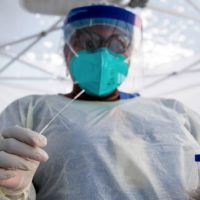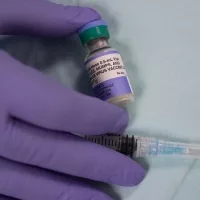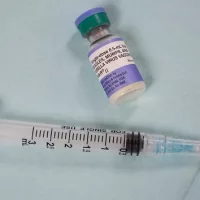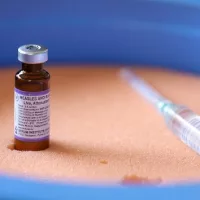
(NEW YORK) — Throughout the pandemic, periodic surges in demand for COVID-19 testing — typically during a spike in cases or prior to holiday travel — have put strain on the nation’s testing capacity.
During these times, it can be difficult for people to quickly learn if they are positive for the virus — and to isolate if they are.
Testing is something the U.S. has struggled to get right from the get-go, from strict rules and problems with the initial test kits to how to manage supply and demand during peaks and lulls. In 2021, America grappled with how to manage the volume of tests needed in a fully reopened country with schools and workplaces requiring regular testing, pressures exacerbated during the highly contagious omicron variant hitting ahead of the holidays.
This presents a real problem because experts believe a successful COVID-19 testing regime — along with vaccinations — is the key to building a new normal.
Over the course of the pandemic, the number and types of tests have proliferated, turnaround times for results have varied and other questions arose, including which test should be used and when and where should they be administrated.
So how can the U.S. increase access to tests, and what kind of infrastructure is needed if COVID is going to be an endemic disease, meaning it is always circulating within the population but at low rates. What kind of testing system is needed to prevent further outbreaks fueled by variants including delta and omicron?
Testing experts told ABC News the answer is decentralizing the system and delivering tests to patients directly, setting up community sites with reliable rapid molecular testing and being able to test people for multiple diseases at one time — including COVID.
The tests we have now
Currently, the U.S. has two different types of viral tests used to diagnose COVID-19: antigen tests and molecular tests.
Antigen tests, also known as rapid tests, look for antigens, or proteins, from the coronavirus and return results usually within less than an hour. Molecular tests, also known as PCR tests, are run in a laboratory for viral material and typically return results within three days.
PCR tests are mostly administered at government-run sites, urgent care centers, doctor’s offices and pharmacies, many of which have seen long lines amid the surge fueled by the omicron variant. At-home antigen tests have soared in popularity in recent weeks as way to avoid lines and quickly determine whether or not a person is infected.
How quickly the omicron variant continues to spread will determine whether the U.S. has enough testing capacity for now, the experts say.
“Certainly we have a lot of testing and I think, currently, in the country we can provide well north of two or three million [lab] tests in a day when you consider everything that’s available,” Dr. William Morice, chair of the Department of Laboratory Medicine at Mayo Clinic, told ABC News.
Currently, the U.S. is performing an average of 1.7 million COVID-19 tests per day, according to data from the Centers for Disease Control and Prevention (CDC). However, experts say we should be performing more tests than that.
Dr. Peter Chin-Hong, an infectious diseases specialist at the University of California, San Francisco, told ABC News that the U.S. needs to be performing many more tests — upwards of 2 or 3 million per day — so infected people can get the treatment they need more quickly, avoid being sent to the hospital and contact tracing can occur.
“Use of testing, it’s not as much to show how many cases we have, but it’s actually used for diagnosis ” Chin-Hong said. “When people use testing early on, they can get better bang for their buck with early therapies and prevent them from going to the hospital.”
He continued, “A PCR test can trigger contact tracing, early therapy. There are a lot of other domino effects of testing that’s simply just more than ‘I have another case in my community.’ It actually ends up potentially saving hospital resources.”
Morice believes that if cases continue to rise, then the supply could be strained. The U.S. is recording an average of more than 668,000 infections per day (as of Jan. 7) — the most ever since the pandemic began, although this figure is partially due to a backlog of data reporting over the holidays.
“When the virus is not prevalent and less common in communities, the testing that we’ve had, for example here in Seattle, has been quite adequate,” Dr. Geoffrey Baird, chair of the Department of Laboratory Medicine and Pathology at UW Medicine, told ABC News. “I think we have plenty of testing available if we were just testing people who have symptoms.”
He continued, “But when you have to test asymptomatic people before traveling, before gatherings, before school or before sports, that ends up getting difficult to so support because the absolute number of tests needed can get very, very large.”
The experts say that infectious disease modelers didn’t predict the emergence of the omicron variant or how quickly it would spread — especially as people traveled over the holidays — leading to increased demand for testing.
Dr. Brian Rubin, professor and chairman of the Pathology and Laboratory Medicine Institute at the Cleveland Clinic, told ABC News that at his lab, there have been about 50% more positive tests in 2021 than the year before.
During the previous winter surge, the clinic never had more than 1,000 positive tests per day. In late 2021, as many as 1,700 tests per day come back positive, he said. With as many as 4,000 to 5,000 tests being run every day, this puts a great amount of strain on hospitals, laboratory personnel and testing supplies.
The system we need
Rubin believes the key to building up a robust testing program is to decentralize the system the U.S. has even further, meaning more at-home testing without the need of a healthcare provider to order or perform the test.
“Anything we can do to automate that,” he said. “Decentralizing is going to be the key. How do we not call their doctor to order the test, get them to swab themselves, et cetera.”
He added, “If we can get really reliable testing into the hands of individuals so you can test at home without leaving your home, we can handle it.”
Although most at-home tests currently on shelves are pretty reliable, some at-home tests are known to produce an abundance of false positives.
He envisions a system in which the U.S. uses Amazon or an Amazon-like service to deliver test kits to people’s homes on a grander scale than what is already available.
People perform the test themselves, including swabbing and analyzing the sample. Once they get results, they scan a barcode or QR code, alerting public health officials of a positive test result rather than the person having to call a doctor or the local health department to inform them. Although some tests already do this, Rubin would like to see all tests have this capability.
At-home tests have a very low likelihood of delivering false positives if a person is symptomatic. So, under Rubin’s proposed system, if the person is symptomatic and gets a positive result, they could stay home and therefore help eliminate long lines at testing sites and free up appointments at clinics.
However, a person who is asymptomatic and gets a positive result from a delivered at-home test would be recommended to get PCR test to confirm they are truly infected with COVID.
Additionally, under Rubin’s system, if someone is a contact of a positive patient, they would be informed and get guidance on whether to get tested or quarantine.
“We have all the pieces for home testing, but how do we make it super elegant and slick and make it as easy as possible,” he said.
The Biden administration is trying to ramp up testing via a similar method: creating a website that will distribute 500 million free at-home rapid COVID tests to Americans, which officials promised will not cut into the current supply of tests on shelves.
Possible setbacks
However there are issues with rapid tests. At-home testing involves multiple steps and requires a clean workspace, meaning people may be performing the tests incorrectly. Additionally, rapid tests are more likely to return false negatives than laboratory tests because they are less sensitive.
This means that rapid tests have to detect enough antigens, or proteins, in the nose to return a positive result. However, laboratory tests, which look for genetic material, can return a positive result even if only trace amounts are detected.
Because of these potential issues, Baird says he is in favor of setting up community testing sites like UW Medicine has done in Washington that use rapid molecular tests.
These are like PCR tests, which are considered the gold standard of testing, but return results within a few hours rather than within a few days.
The UW community sites collect samples, which are then shipped by courier back to the main lab, where they can be quickly analyzed, Baird would like to see a similar system set up by big hospitals across the country.
“The chances of it giving a false negative are very, very low. No test is 100% perfect but it’s as good as you can get and so we’re doing the best we can by making the best possible test as expendable as possible,” Baird said. “I’d be in favor of multiple community test sites like kiosks or trailers or other sites, it can be in retail spaces or something like that.”
Morice said it’s also important to have combination tests that check for multiple diseases such as COVID-19 and the flu, which are currently available — although not at all clinics.
“That will be really important and it’s certainly needed,” he said. “Last year was really anomalous in that we had no influenza whatsoever. Now we’re seeing rates going back up so we’ll need it for that reason.”
Copyright © 2022, ABC Audio. All rights reserved.














